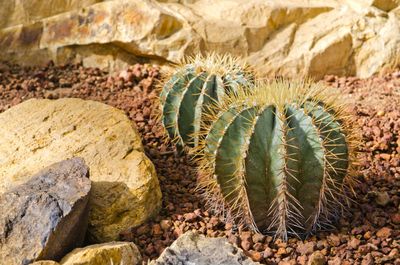Monk’s Hood Cactus Info
There are numerous smaller succulents available today that weren’t available just a few decades ago. Plant breeders and collectors have been busy developing new species or breeding more of harvested wild species. This makes the selection for home gardeners broad and introduces us to monk’s hood cactus. It is endemic to the central Plateau of Mexico but is now widely found as a houseplant. Monk’s hood has interesting geometric form from all angles. At the sides, it has a window pane effect of strong planes decorated with spines. Viewed from above it has a characteristic star shape, earning it the other name of star cactus, with 8 ribs making up the form. In its native habit, the cactus can grow more than 6 feet (2 m.) in height and a foot (30.5 cm.) wide. The greenish-gray skin develops white flecks which help protect the plant from searing sun. When young, it is a rounded plant becoming more columned as it matures. Monk’s hood cactus blooms in late spring. Flowers are creamy yellow, 2.5 inches (6 cm.) wide, and have a lovely scent.
Growing a Monk’s Hood Plant
Astrophytum requires well-draining soil. Like most cacti, they suffer in excessively wet conditions and can even die. Purchase cactus soil or make your own with half potting soil and half gritty material, such as horticultural sand. Make sure any container has clear drainage holes. The use of an unglazed pot can be helpful in removing excess moisture through evaporation. Monk’s hood does not have a deep root base, so a shallow container is more than sufficient. Place the plant in full sun and water when soil is dry to the touch. The hardiness range for the plant is United States Department of Agriculture zones 9b to 10. If you live in this range, you can plant the cactus outdoors in well-draining soil.
Astrophytum Cactus Care
Cacti are easy to grow provided they get plenty of light and water is judiciously applied. In winter, the plant is dormant and will need half the water necessary during spring and summer. Because this is the largest of the Astrophytum species, it will need a consistently larger container as it grows. Repot in late winter to early spring. Keep the plant in temperatures of 70 degrees Fahrenheit (21 C.) for best growth. Fertilize in spring with a 20-20-20 diluted by half in the irrigation water.
